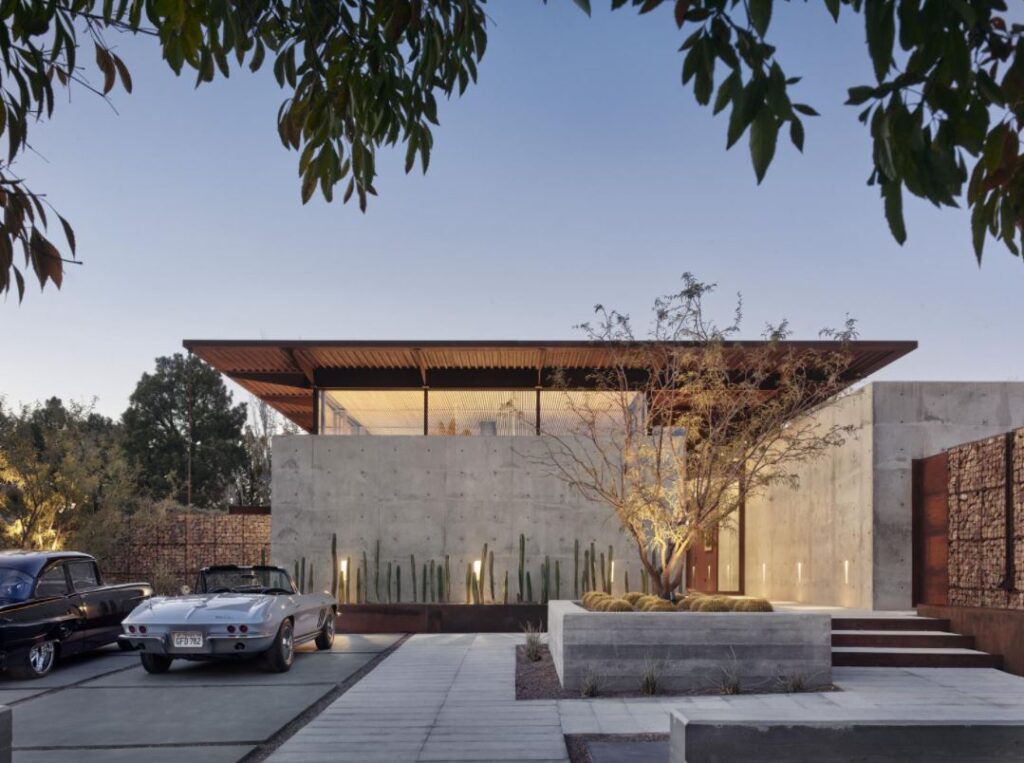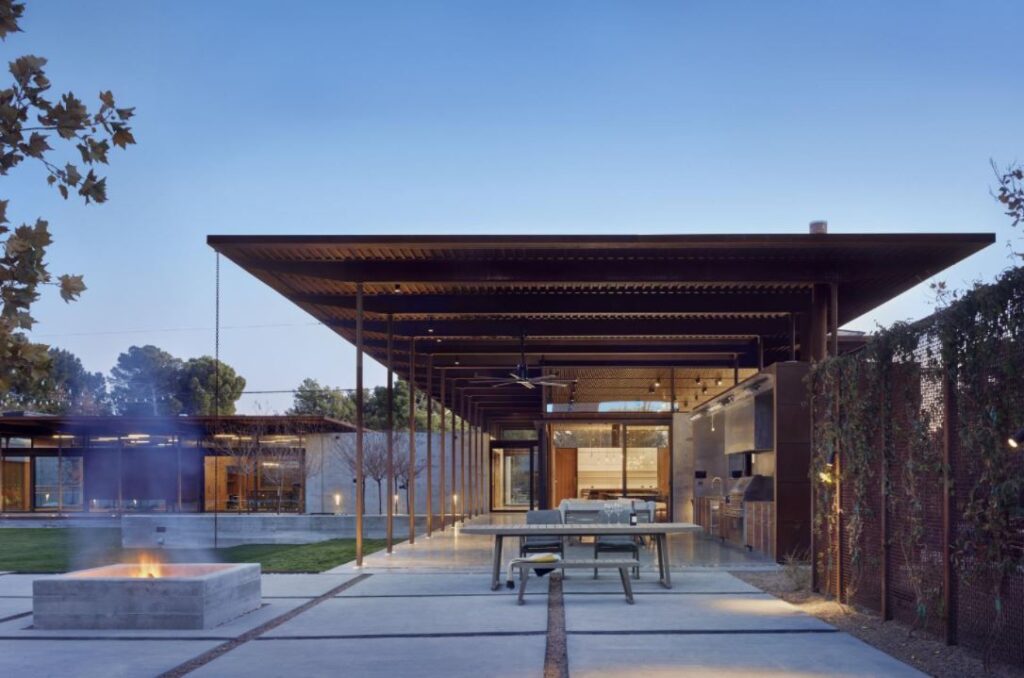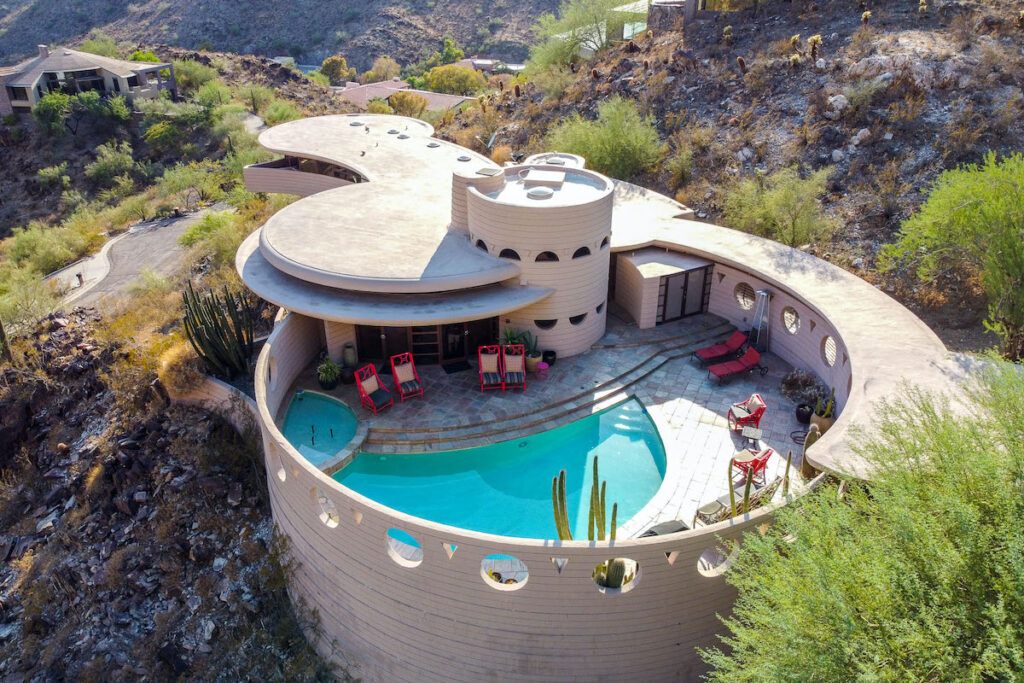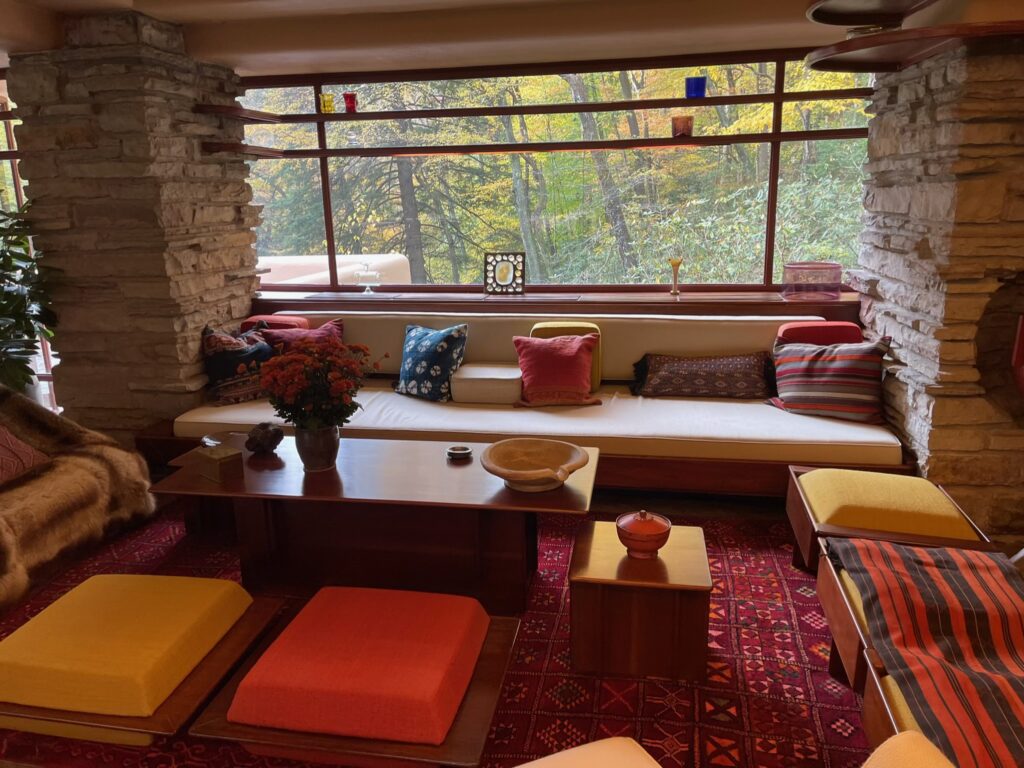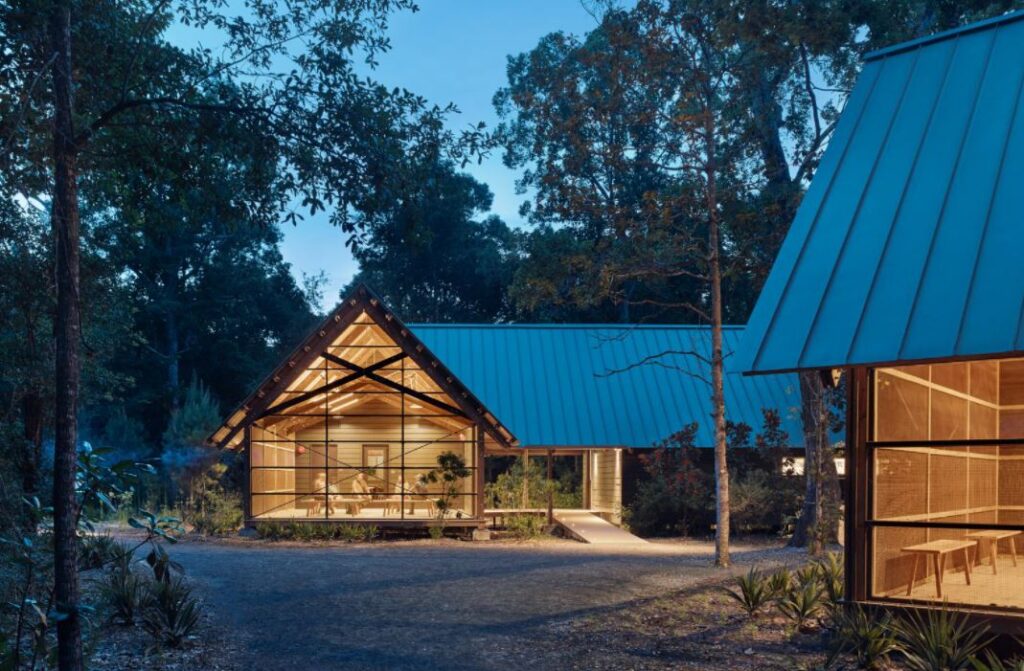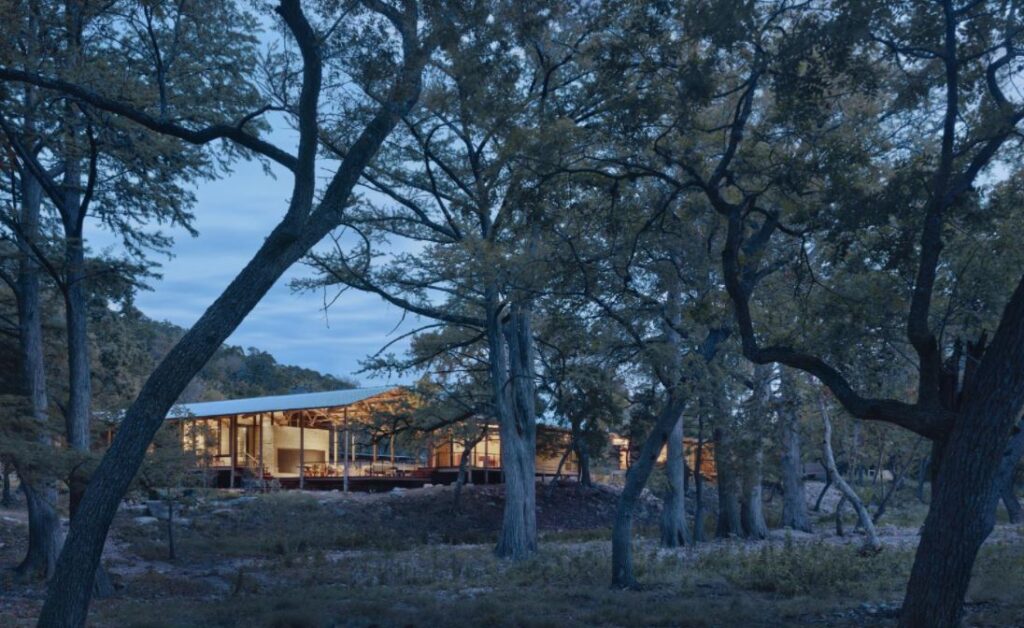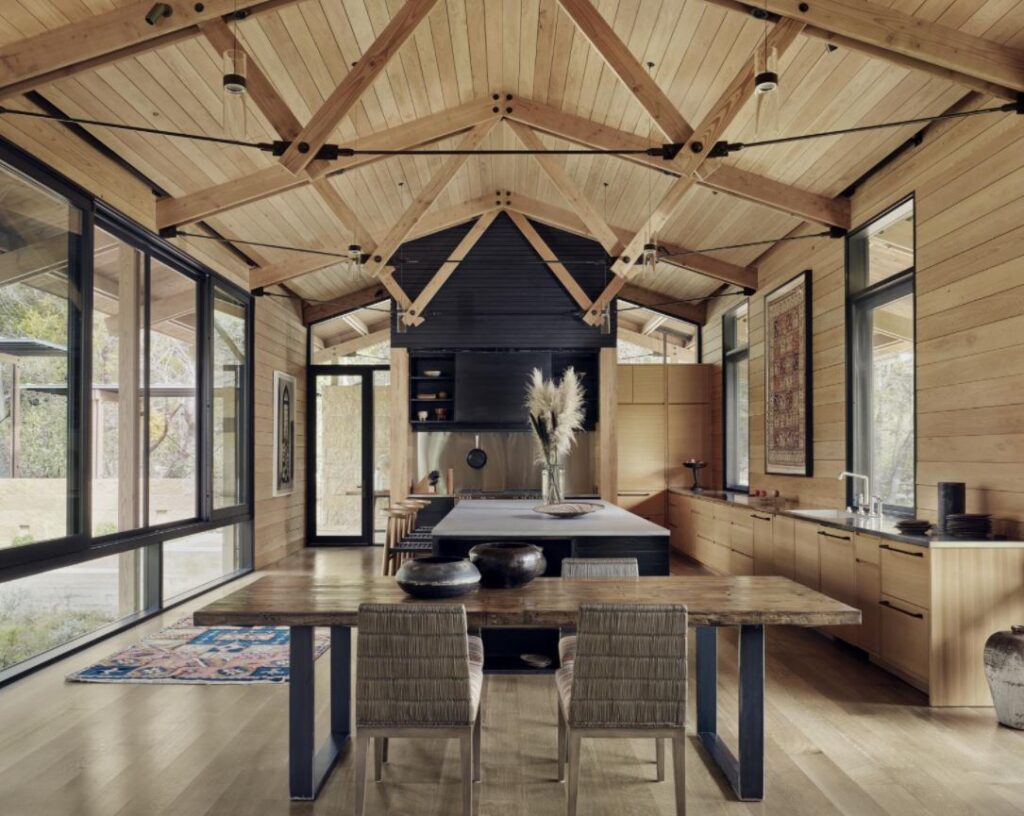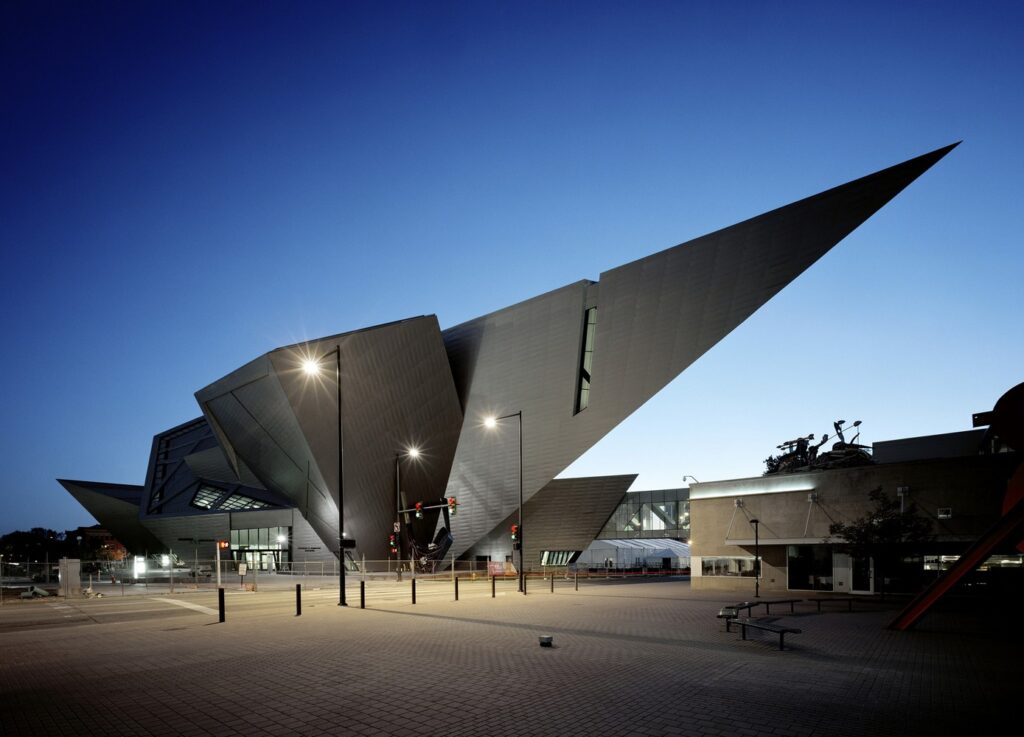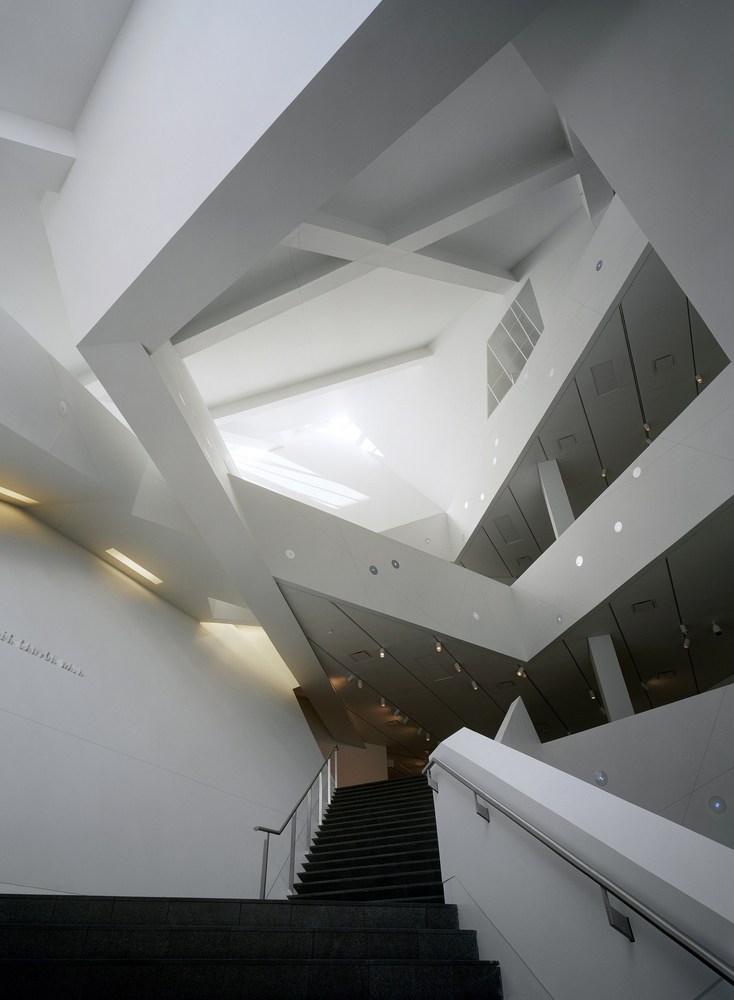This is another residential build by Lake|Flato Architects. The Courtyard House in El Paso, Texas stood out to me because of the large use of exposed concrete. The concrete walls give the home an extremely modern look. From the front exterior, the house seems rather closed off and private with its towering concrete walls. However, around the back side of the house, it is a completely different atmosphere. The back yard has a much more open concept with large windows seeing into the interior of the house and large courtyard. This is where you can clearly see how the home got its name. The courtyard is very inviting and yet it has a calm feeling to it. I think this is because the large use of concrete still, however, there is also the use of other materials and also a grass area which is what I think gives it that “homey” feel.
